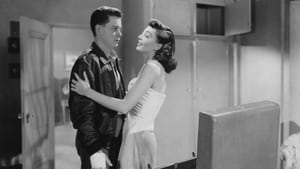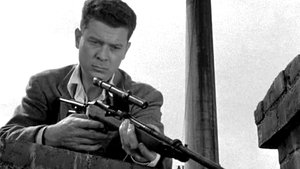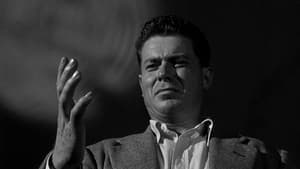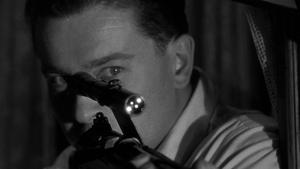Contact: [email protected]
Video Sources 0 Views

Synopsis
[ez-toc]




Introduction
In the ever-evolving landscape of cinema, the debate surrounding the colorization of old movies remains a hot topic. The Sniper Colorized 1952 emerges as a significant player in this dialogue, offering a pioneering example of colorization that challenges traditional perceptions of classic films. As we delve into the world of The Sniper Colorized 1952, we’ll explore the evolution of colorized movies, the key players involved, the narrative nuances, and the controversies that surround this cinematic gem.
Read Media File Transfer Agreement: Terms and Conditions
Read FAQ
The Evolution of Colorized Movies
Colorization, a process that adds color to black-and-white films, has a storied history marked by technological advancements. Initially met with skepticism, this technique has evolved over the years, contributing to the preservation and accessibility of old films. The controversies surrounding colorized versions of classics, often seen as sacrilegious by purists, add an extra layer to the discussion, sparking debates within the film community.
The concept of colorizing black-and-white films dates back to the early 20th century, but it gained prominence in the 1980s with the advent of digital technology. The idea was to breathe new life into old movies, making them more appealing to contemporary audiences accustomed to the vibrant palette of modern cinema. However, this transition was not without its critics, who argued that colorization altered the artistic integrity of the original works.
Technological advancements have significantly improved the colorization process. Early attempts often resulted in unnatural and garish colors, but modern techniques have become more sophisticated, preserving the subtleties of the original cinematography. Despite these advancements, the controversy persists, raising questions about the ethical implications of altering classic films.
Understanding The Sniper Colorized 1952
Directed by Edward Dmytryk, The Sniper Colorized 1952 delves into the mind of a serial sniper in San Francisco. The stellar cast includes Adolphe Menjou, Arthur Franz, Gerald Mohr, Marie Windsor, Richard Kiley, Burnett Guffey, Aaron Stell, and musical contributions by George Antheil. Produced by Stanley Kramer Productions and released by Columbia Pictures, the film stands as a bold exploration of criminal psychology in a colorized canvas.
Edward Dmytryk, known for his contributions to film noir, took a daring step in bringing The Sniper Colorized to life. The decision to colorize a movie from the early 1950s, an era steeped in the noir aesthetic, was a calculated risk. It aimed not only to rejuvenate a classic but also to redefine the boundaries of colorization in storytelling.
The ensemble cast brought their A-game to The Sniper Colorized 1952, with Adolphe Menjou delivering a memorable performance as a police psychologist trying to understand the mind of the eponymous sniper, portrayed by Arthur Franz. The supporting cast, including Marie Windsor, Richard Kiley, and Gerald Mohr, added layers to the narrative, contributing to the film’s immersive exploration of the criminal psyche.
Examining the significance of San Francisco as the backdrop further enriches the viewing experience. The city’s iconic landmarks and distinctive atmosphere become integral elements of the narrative, providing a canvas for the psychological thriller to unfold. The decision to colorize this specific setting adds a new dimension to the visual storytelling, enhancing the film’s immersive quality.
Analyzing the Narrative and Themes of The Sniper Colorized 1952
Set against the backdrop of San Francisco, The Sniper Colorizedweaves a gripping tale around the disturbed psyche of its protagonist. Eddie Miller, played by Arthur Franz, becomes a compelling character study, portraying the complexities of a man driven to commit heinous acts. The narrative explores the impact of criminal profiling and introduces the M1A1 Carbine as a visual extension of the sniper’s distorted mind.
The plot follows Miller, a mentally unstable war veteran who turns his military training into a deadly skillset. The film takes the audience on a harrowing journey as Miller’s actions escalate, and the police race against time to stop him. The character’s descent into madness becomes a commentary on the psychological toll of war and the challenges faced by veterans reintegrating into society.
The M1A1 Carbine, a weapon Miller utilizes in his crimes, becomes a symbolic element in the narrative. Beyond its function as a tool of violence, the carbine represents the lingering trauma of war and the ways in which it can manifest in civilian life. The film uses this visual metaphor to delve into the psychological aftermath of conflict, adding layers of depth to Miller’s character.
The influence of film noir on The Sniper Colorized 1952 is evident in its visual style and atmospheric elements. The chiaroscuro lighting, shadowy alleyways, and morally ambiguous characters contribute to the noir aesthetic, creating an intense and immersive viewing experience. The decision to colorize a film entrenched in noir traditions brings a fresh perspective to the genre, allowing audiences to appreciate the nuances of the visual storytelling in a new light.
The Making and Reception of a Colorized Classic
The production of The Sniper Colorized 1952 faced challenges during on-location shoots in San Francisco. Capturing the city’s essence while navigating the logistical intricacies of filming added an element of authenticity to the movie. The strained relationships between the director and actors, a common occurrence in the film industry, influenced the dynamics on set but ultimately contributed to the intensity of the performances.
Edward Dmytryk, a director who himself faced scrutiny during the Hollywood Blacklist era, brought a unique perspective to The Sniper. The echoes of the blacklist, a dark chapter in Hollywood history, added layers of complexity to the film’s creation. The inclusion of themes related to societal paranoia and the impact of war on individuals can be seen as subtle commentary on the political climate of the time.
Upon its release, The Sniper Colorized 1952 generated controversy, partly due to its bold decision to colorize a classic noir film. Some purists argued that colorization altered the intended mood and aesthetic, diluting the authenticity of the original black-and-white version. However, others praised the film for breathing new life into a classic and introducing it to a younger audience unfamiliar with the noir genre.
Despite the initial controversies, The Sniper Colorized 1952 has left an enduring legacy. Its bold approach to colorization paved the way for future reinterpretations of classic films. Columbia Pictures, the studio behind the film, weathered the storm of criticism and showcased the potential for colorization to be a tool for both preservation and innovation.
The Debate Over Criminal Profiling in The Sniper Colorized 1952
A crucial aspect of The Sniper is its portrayal of criminal profiling techniques. As a police psychologist attempts to understand the motivations and patterns of the sniper, the film delves into the emerging field of criminal profiling. The accuracy of these techniques, as presented in the movie, becomes a subject of discussion and debate.
The Sniper Colorized 1952 offers a cinematic exploration of the early days of criminal profiling, an area that would later become a prominent feature in crime-solving narratives. The film raises questions about the ethical considerations and potential pitfalls of relying on psychological analysis in criminal investigations. The blurred lines between accuracy and fictionalization in depicting profiling methods spark conversations about the responsibility of filmmakers in portraying real-world practices.
The discussions surrounding criminal profiling in The Sniper Colorized 1952 resonate with contemporary debates on the ethics of true crime narratives and the portrayal of law enforcement methods in popular media. The film, despite its vintage origins, remains relevant in its exploration of the delicate balance between storytelling and the responsible depiction of real-world practices.
Comparing Colorized Cinematic Experiences: The Sniper vs Othello (1951)
To gain a deeper understanding of colorization, comparing The Sniper Colorized 1952 with Othello (1951) provides valuable insights. Contrasting approaches to colorization in these films reveal the diverse artistic choices made by filmmakers, showcasing the range and impact of this evolving technique.
Othello, a classic adaptation of Shakespeare’s tragedy, represents a different genre and artistic vision compared to The Sniper. The decision to colorize Othello brings a new dimension to the timeless tale, emphasizing the visual splendor of the costumes and settings. Contrasting this with the gritty realism of The Sniper highlights the versatility of colorization as a storytelling tool.
While purists may argue that colorization disrupts the intended experience of these classics, others appreciate the opportunity to see familiar stories in a new light. The Sniper Colorized 1952 and Othello (1951) serve as contrasting examples of how colorization can enhance different genres, inviting viewers to reconsider their preconceptions about the impact of color on cinematic narratives.
Preserving Film History: Balancing Authenticity and Accessibility
Colorization, while often controversial, plays a role in introducing classic films to new audiences. The Sniper Colorized 1952 exemplifies the delicate balance between preserving the authenticity of original versions and making these cinematic treasures more accessible to contemporary viewers.
Old movies, especially those from the film noir era, hold a unique place in cinematic history. The black-and-white aesthetic, the shadowy cinematography, and the captivating performances contribute to the timeless appeal of these classics. However, the risk of these films becoming relics, inaccessible to younger generations, poses a challenge for film preservationists.
The Sniper Colorized 1952 addresses this challenge by presenting a classic noir in a format that resonates with modern audiences. The colorization breathes new life into the film, making it visually engaging for those accustomed to the vibrant palettes of contemporary cinema. While purists may argue for the preservation of the original black-and-white version, the colorized edition serves as a gateway for newcomers to appreciate the narrative and thematic richness of classic films.
The role of colorization in preserving film history extends beyond personal preferences. It becomes a tool for cultural preservation, ensuring that the stories and themes embedded in these classics remain relevant across generations. The Sniper Colorized 1952, in its reimagined form, becomes a bridge between the past and the present, inviting audiences to explore the roots of cinematic storytelling in a more accessible manner.
The Enduring Significance of The Sniper Colorized 1952
The character of Eddie Miller, portrayed with complexity and depth by Arthur Franz, resonates across time, highlighting the film’s cultural importance. Eddie Miller becomes a symbol of the psychological toll of war, the challenges of reintegration into society, and the darker aspects of the human psyche.
The Sniper Colorized 1952, despite its vintage origins, addresses themes that continue to be relevant in contemporary discussions of crime and punishment. The exploration of criminal psychology, the impact of war on individuals, and the societal response to acts of violence all contribute to the enduring significance of the film.
Eddie Miller’s character becomes a point of reflection, inviting audiences to empathize with the struggles of individuals facing mental health challenges. The film, through its colorized lens, becomes a vehicle for understanding the complexities of human behavior and the factors that contribute to the descent into criminality.
As we revisit The Sniper Colorized 1952, we are reminded of its role as a landmark in cinematic exploration. The film’s enduring significance lies not only in its historical context but also in its ability to transcend the limitations of its time. The colorization of this classic noir adds layers of nuance to its narrative, allowing audiences to engage with its themes in a manner that feels contemporary and relatable.
Should You Watch The Sniper Colorized 1952?
As a film reviewer, the question arises: Should you watch The Sniper Colorized 1952? This personal recommendation acknowledges the artistic merits and controversies surrounding the colorized version. It encourages viewers to engage with the film, form their own opinions, and actively participate in the ongoing dialogue about the intersection of film history and technological advancements.
The decision to watch The Sniper Colorized 1952 ultimately depends on individual preferences. For purists who value the authenticity of the original black-and-white version, the colorized edition may be met with skepticism. However, for those open to experiencing a classic noir in a new light, the colorized version offers a visually striking and emotionally resonant journey into the mind of a serial sniper.
The Sniper Colorized 1952 provides a unique opportunity to witness the evolution of colorization techniques and their impact on classic films. It serves as a case study for the ongoing debate about the intersection of preservation and innovation in cinema. As viewers, we are presented with a choice: to embrace the colorized version as a gateway to classic storytelling or to uphold the sanctity of the original black-and-white aesthetic.
Conclusion
In the world of colorized movies and old films, The Sniper Colorized 1952 takes its place as a landmark, challenging preconceptions and sparking debates about the preservation of film history. As we explore the depths of criminal psychology through the lens of colorization, we are reminded of the delicate balance between honoring the past and embracing the innovations that shape the future of cinema.
The Sniper Colorized 1952 invites audiences to navigate this intricate terrain, urging them to form their own conclusions and contribute to the ongoing narrative of colorized films in the ever-evolving tapestry of cinematic history. Whether viewed as a bold experiment in colorization or a timeless exploration of the human condition, The Sniper Colorized 1952 remains a testament to the enduring power of classic cinema. It beckons viewers to step into the shadows of noir, where the interplay of light and darkness reveals not only the complexities of storytelling but also the timeless allure of cinematic artistry.















